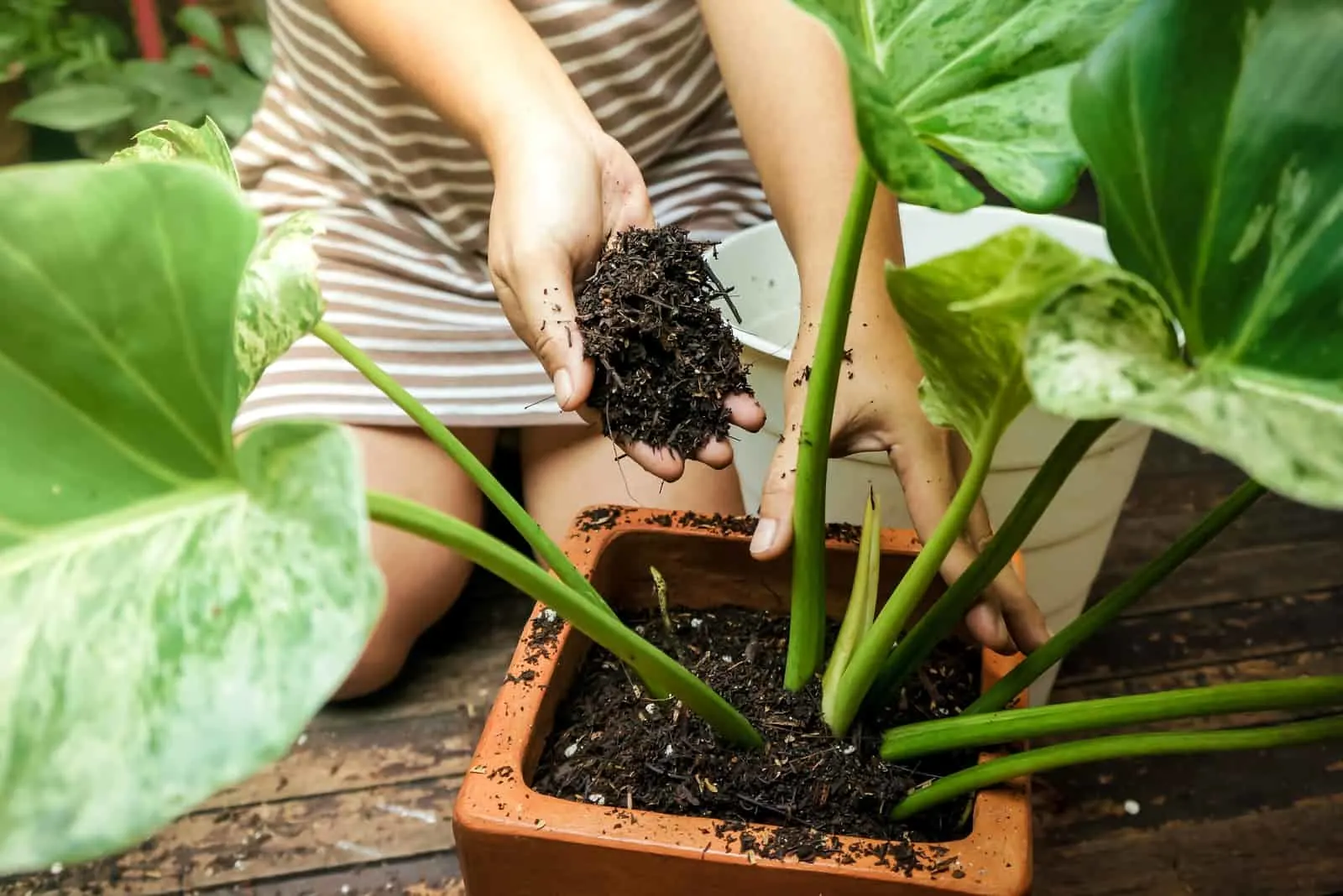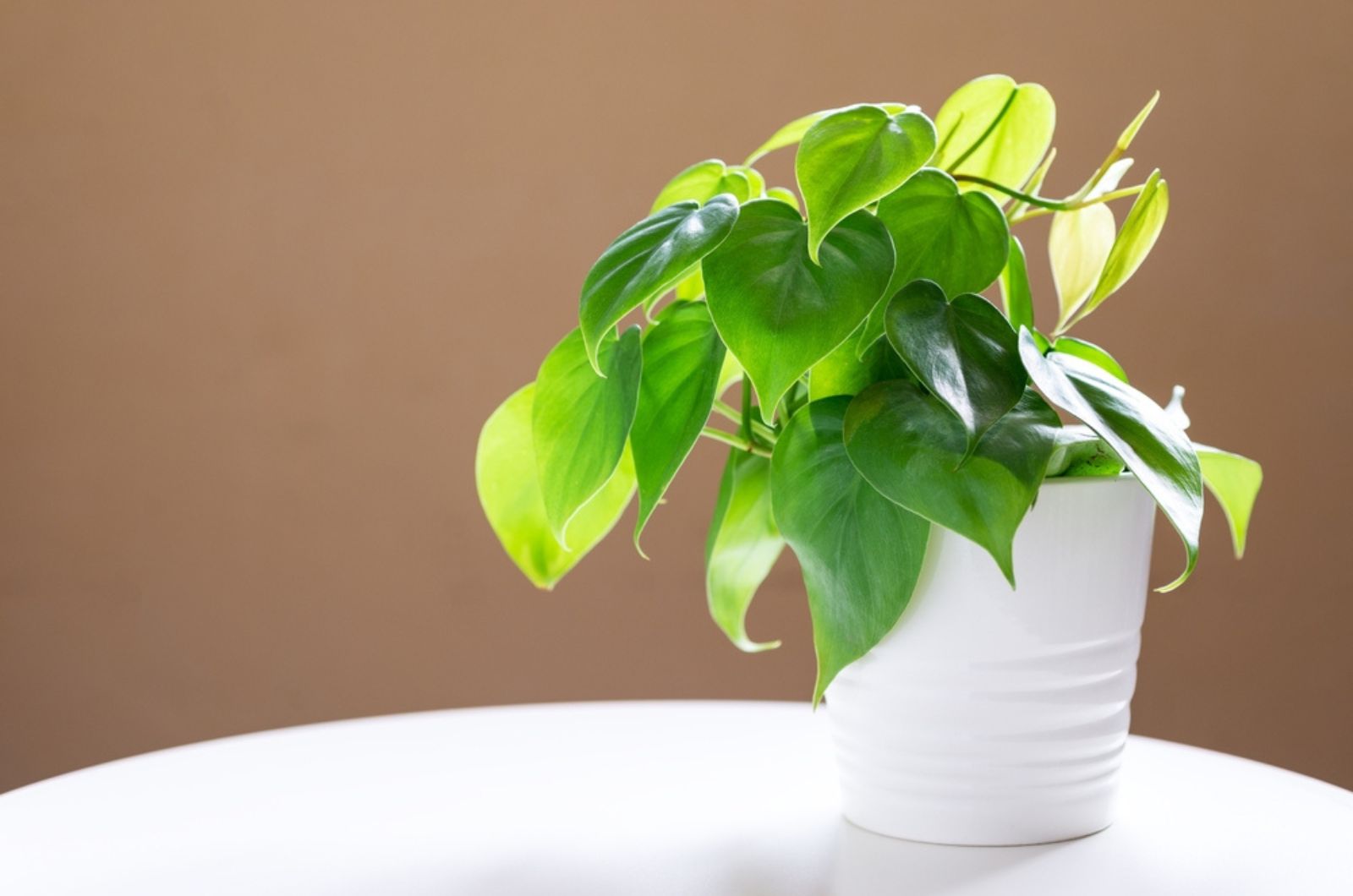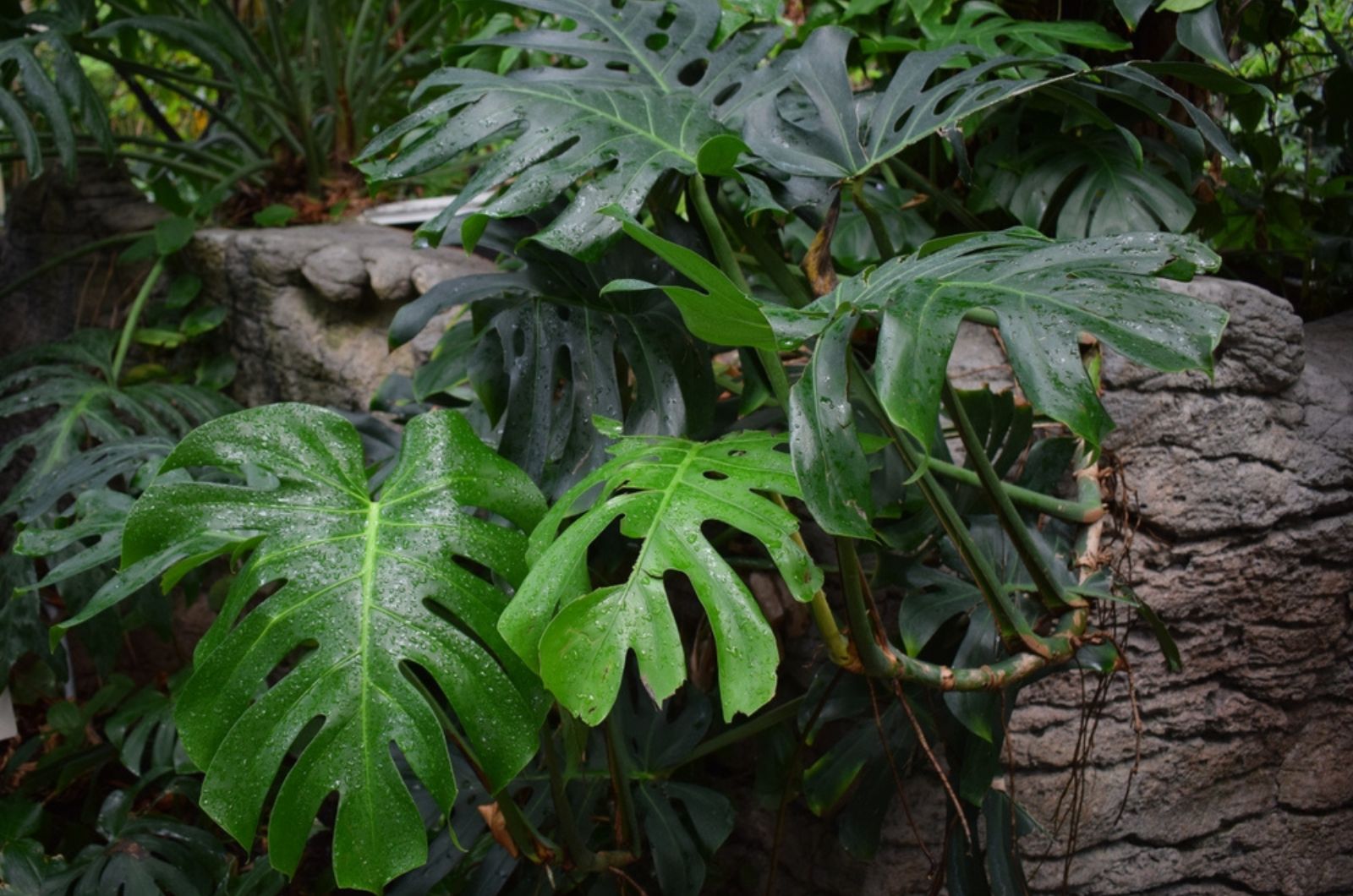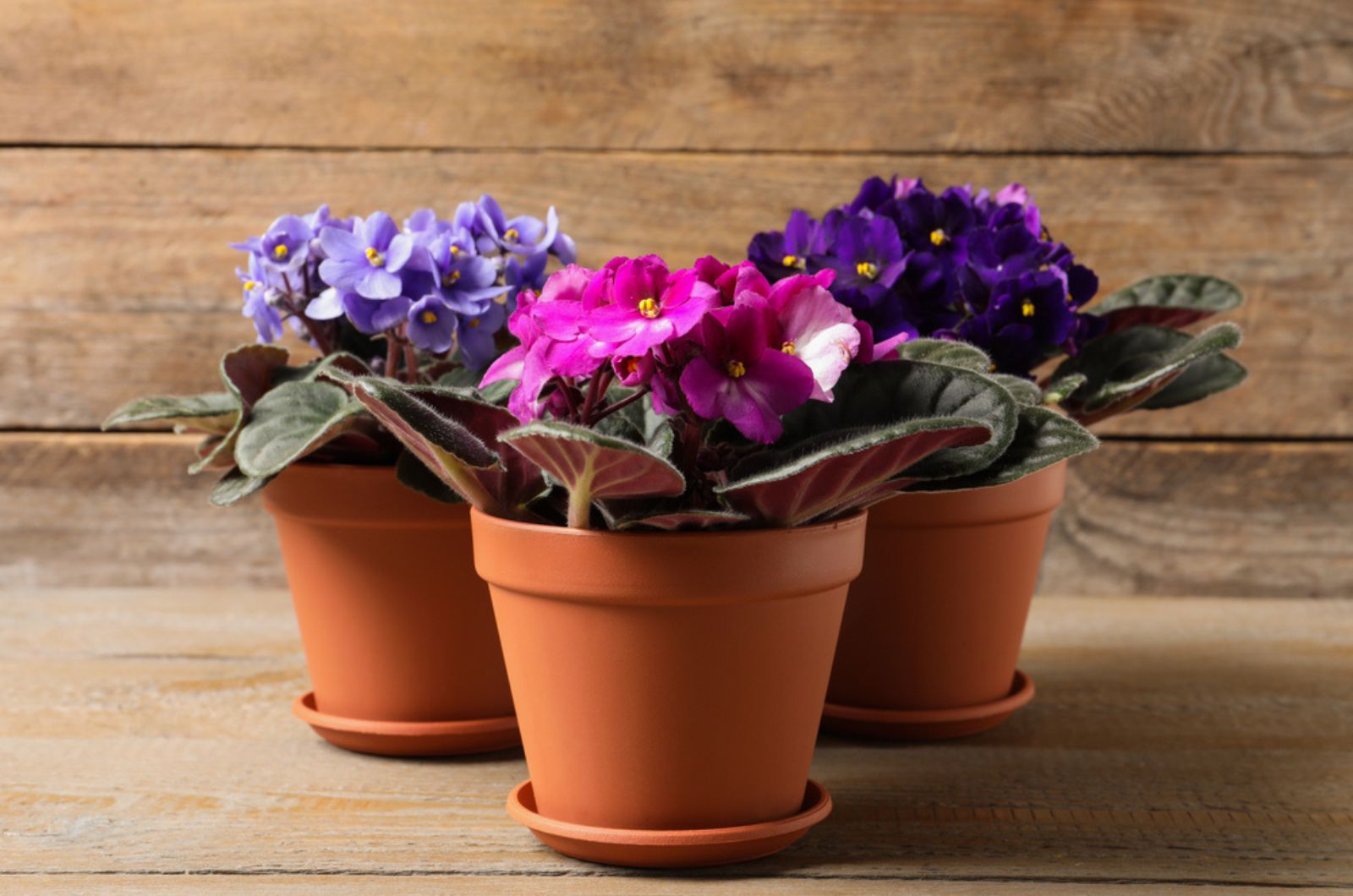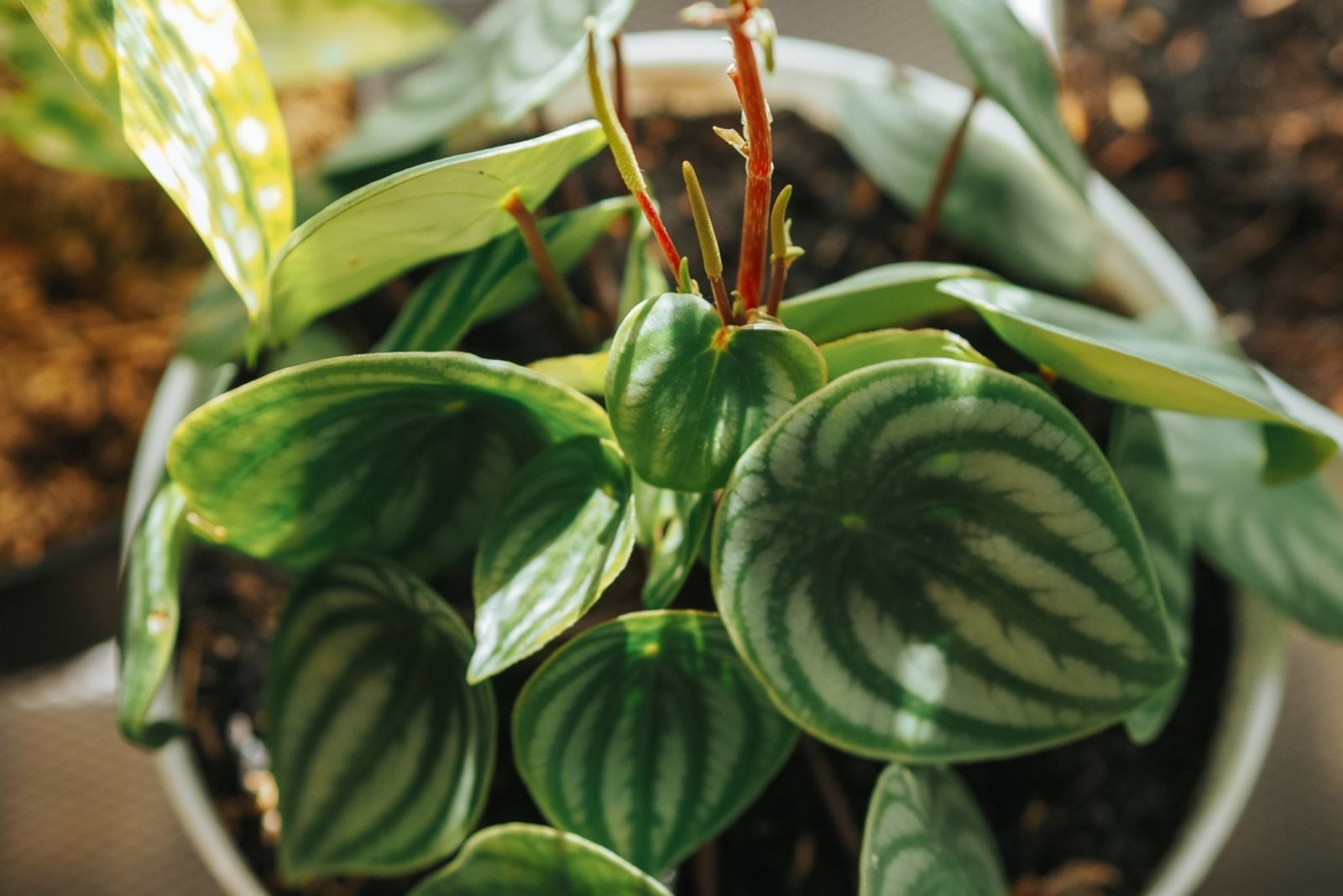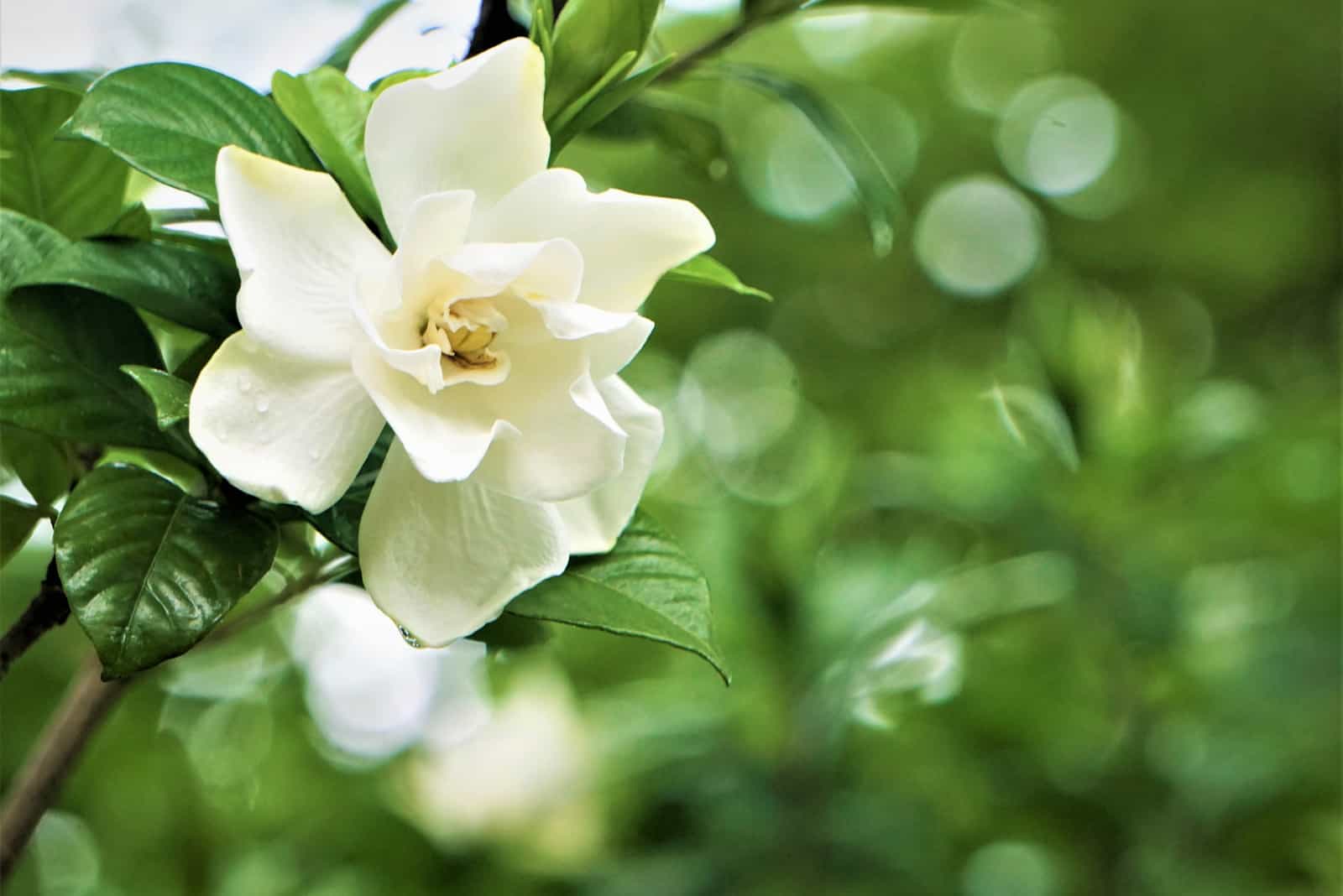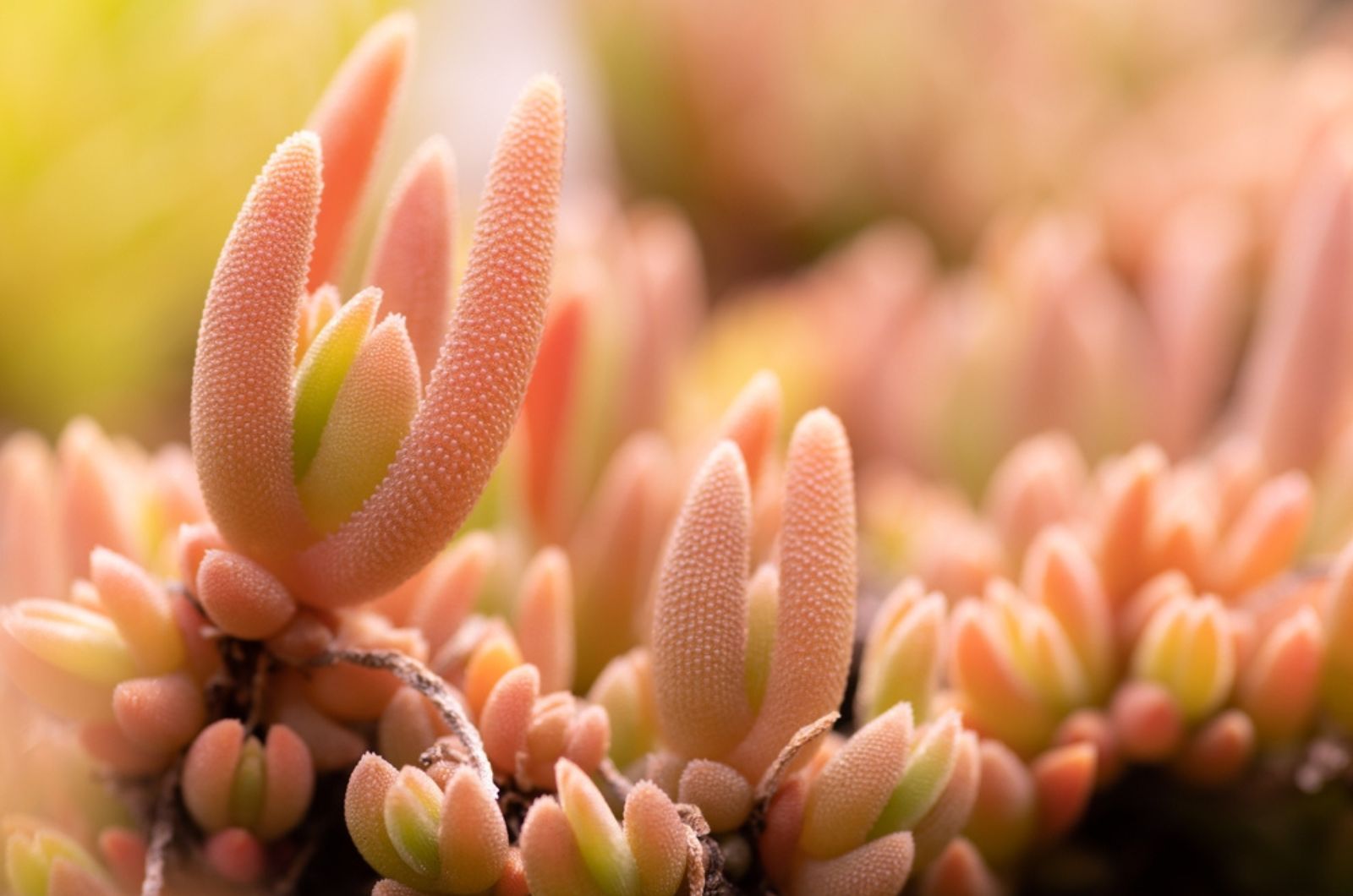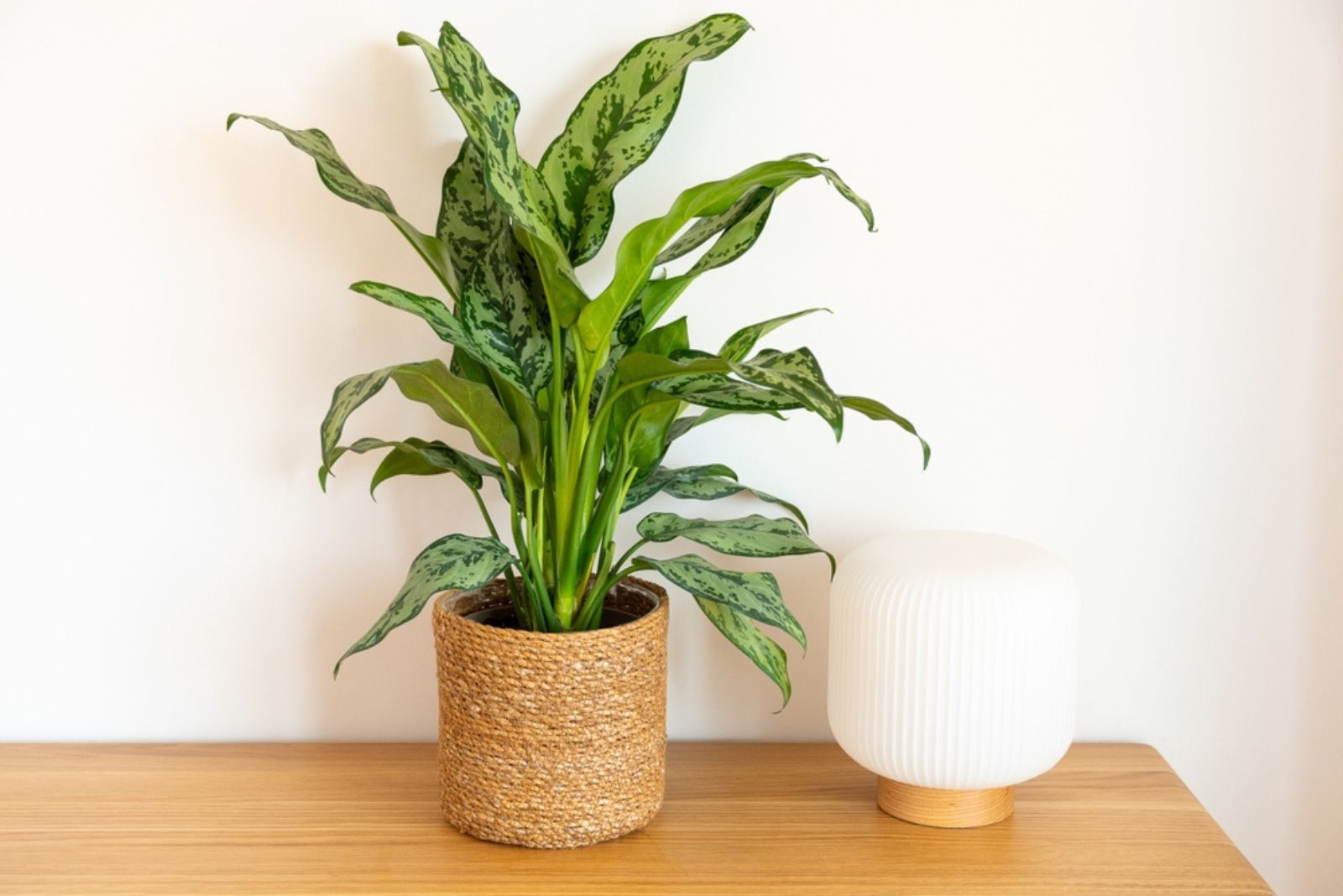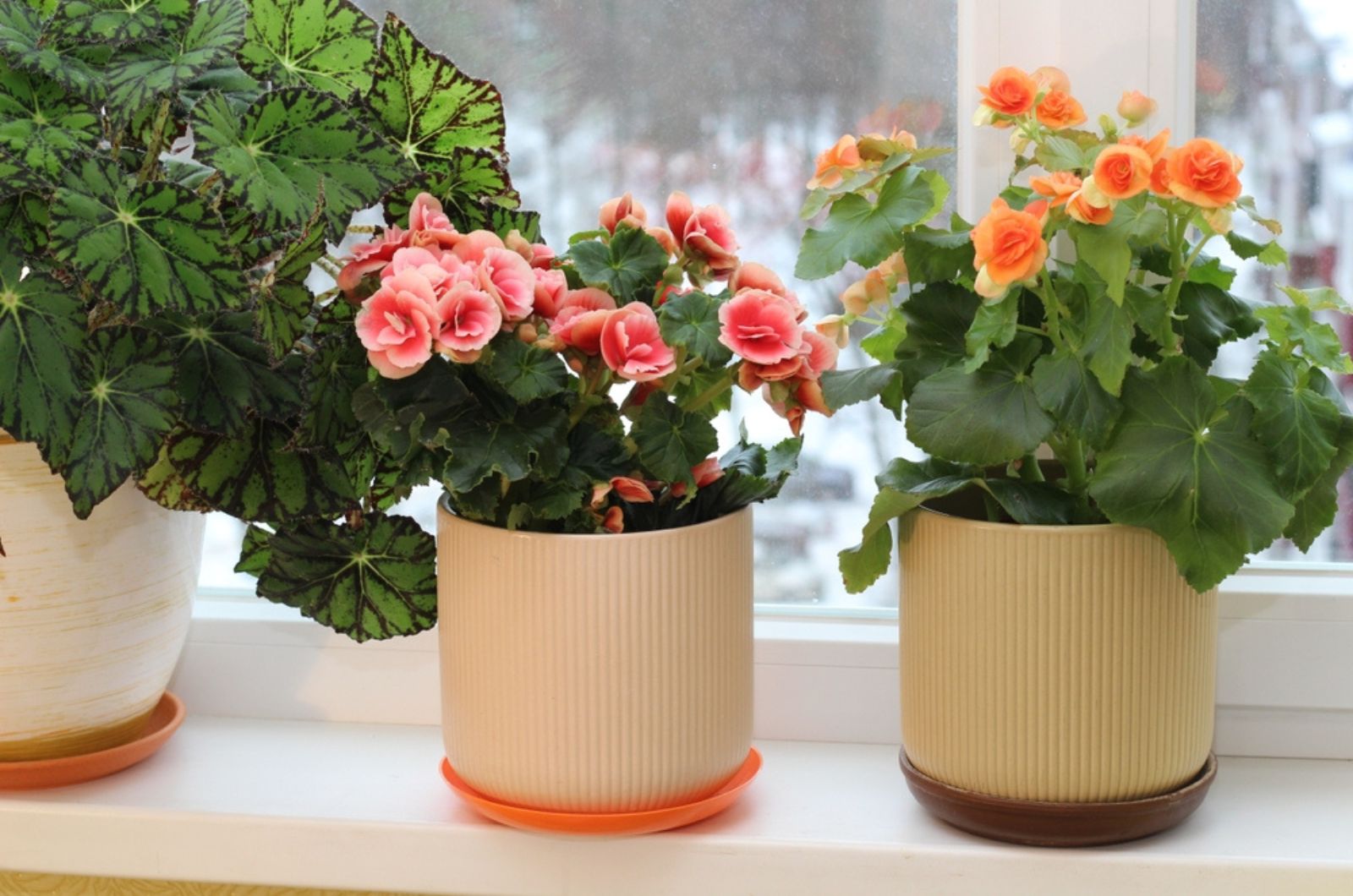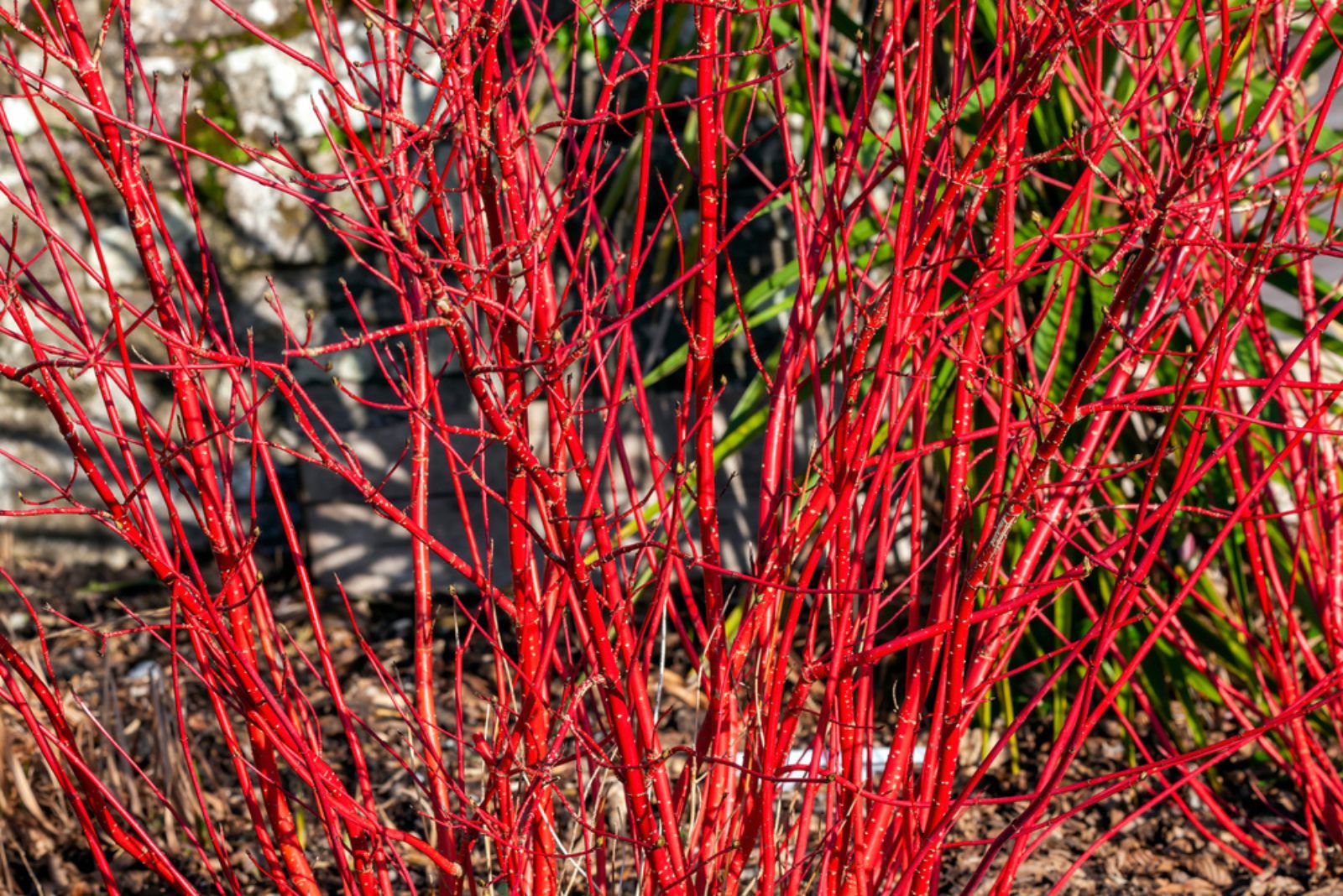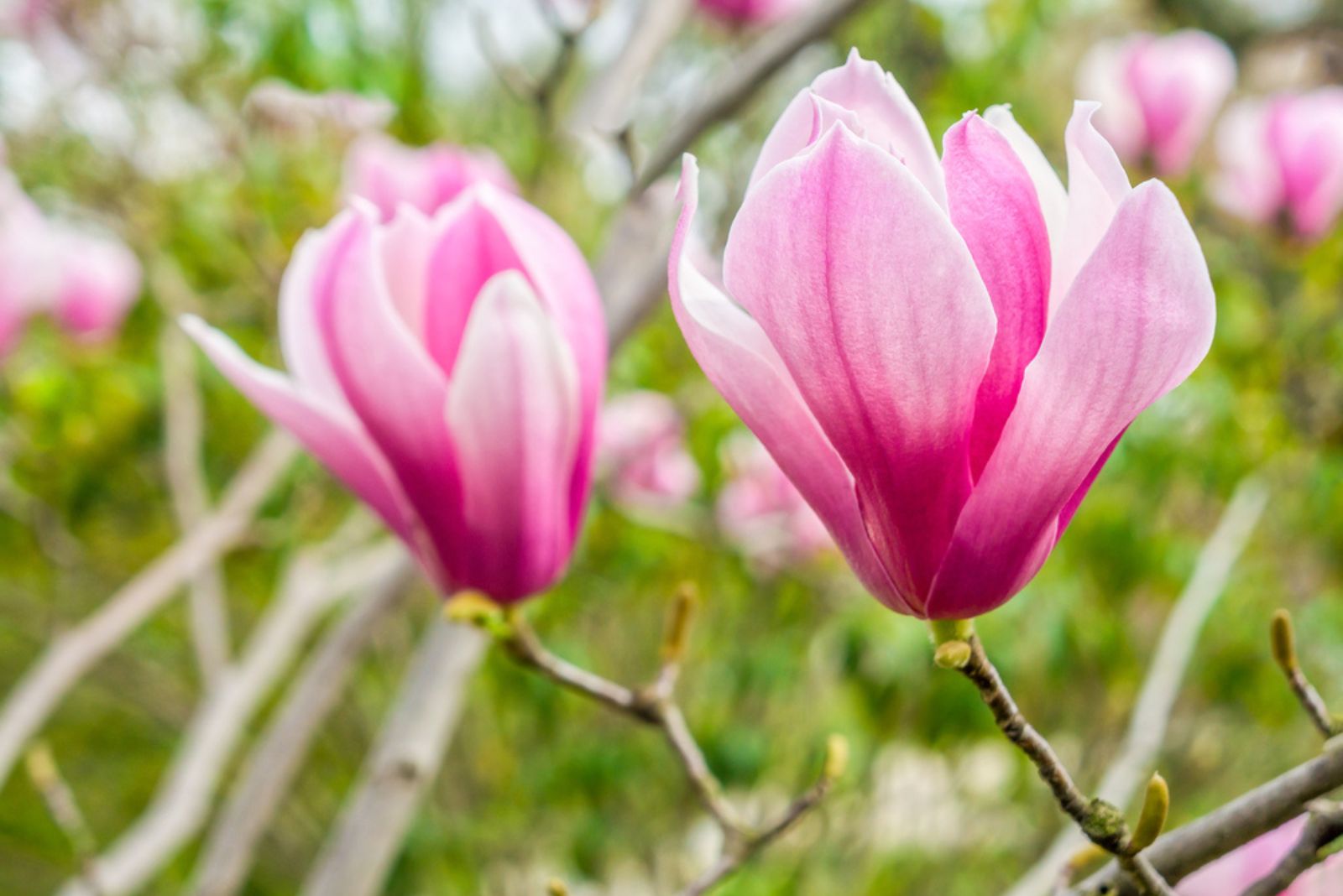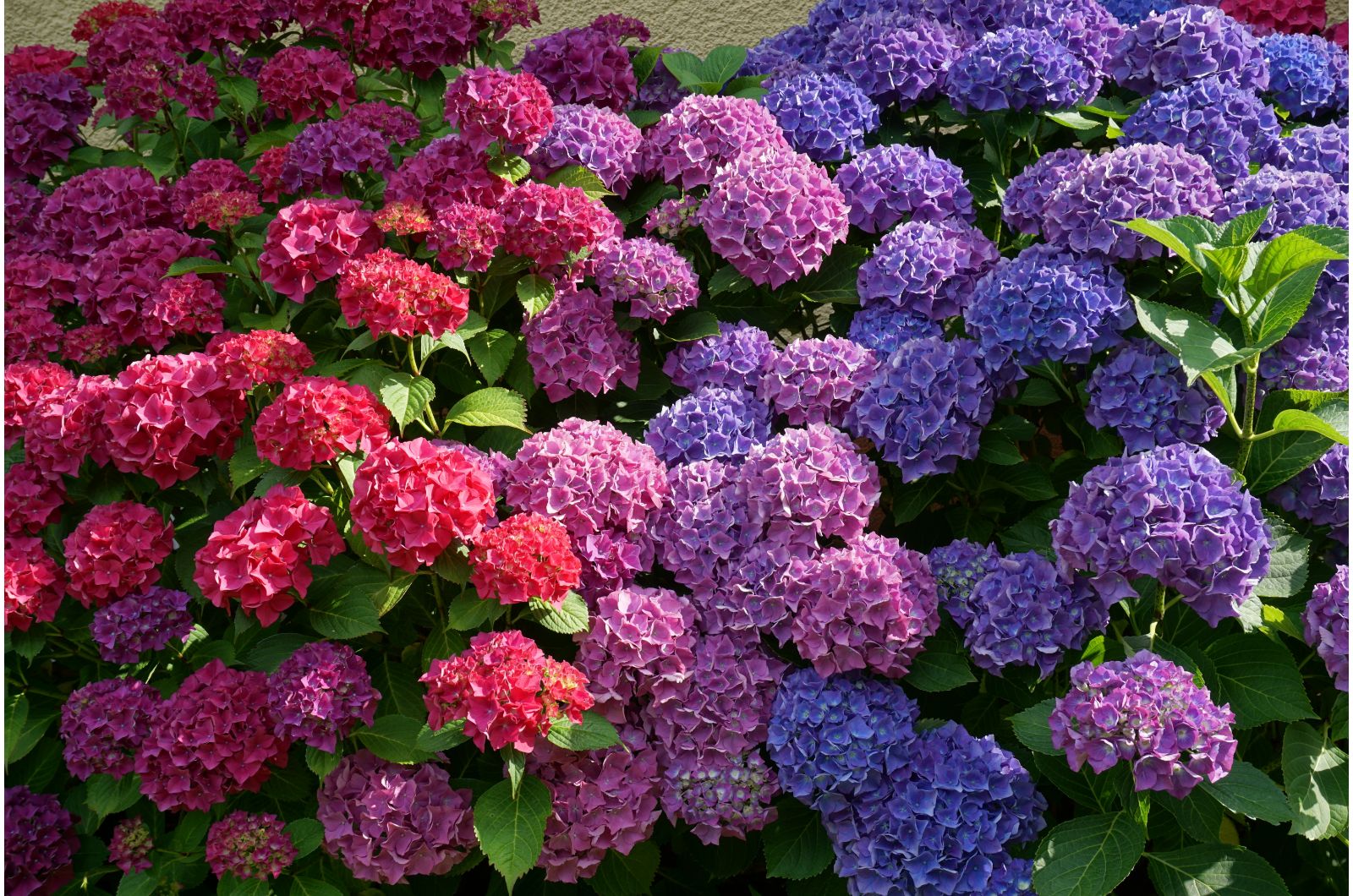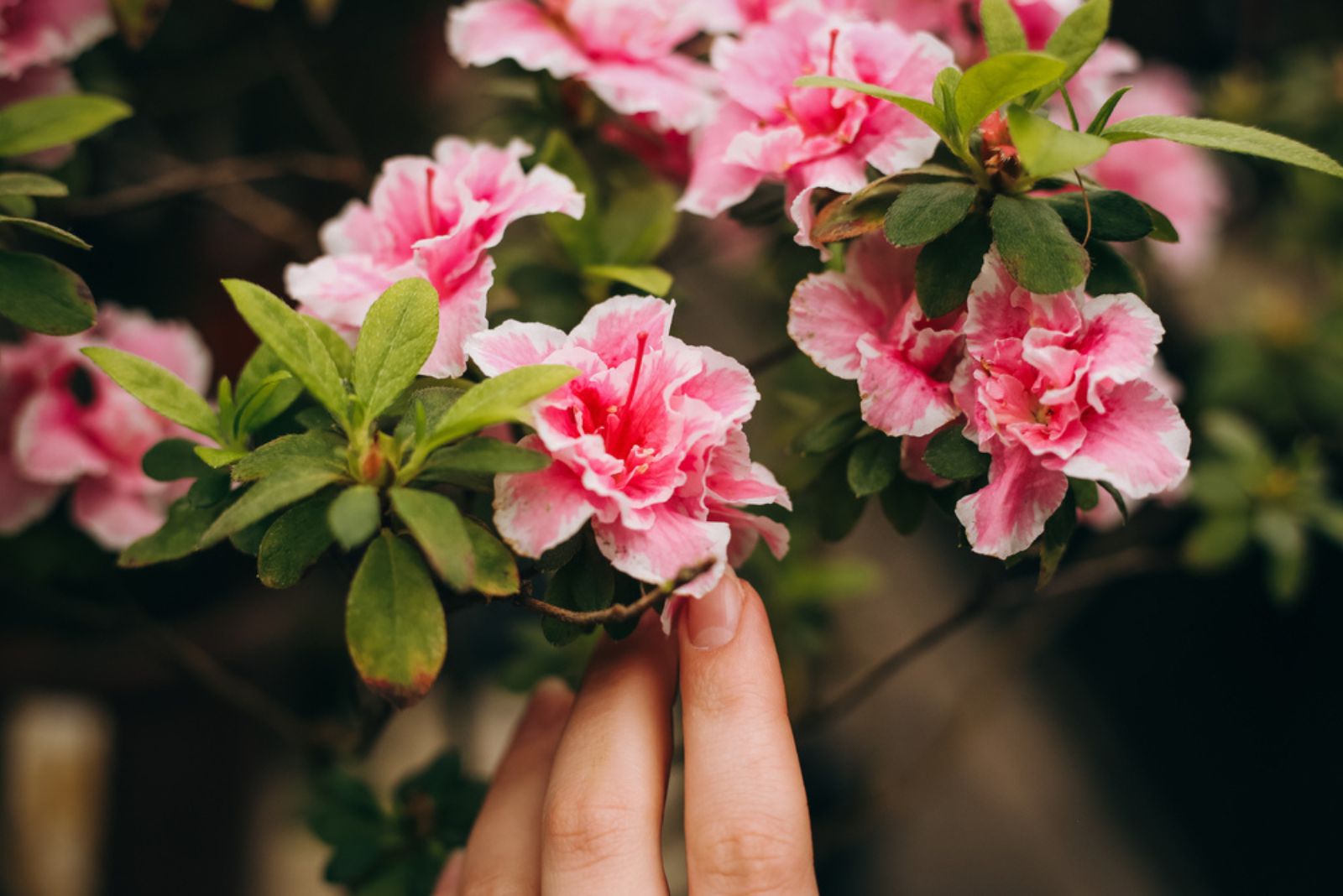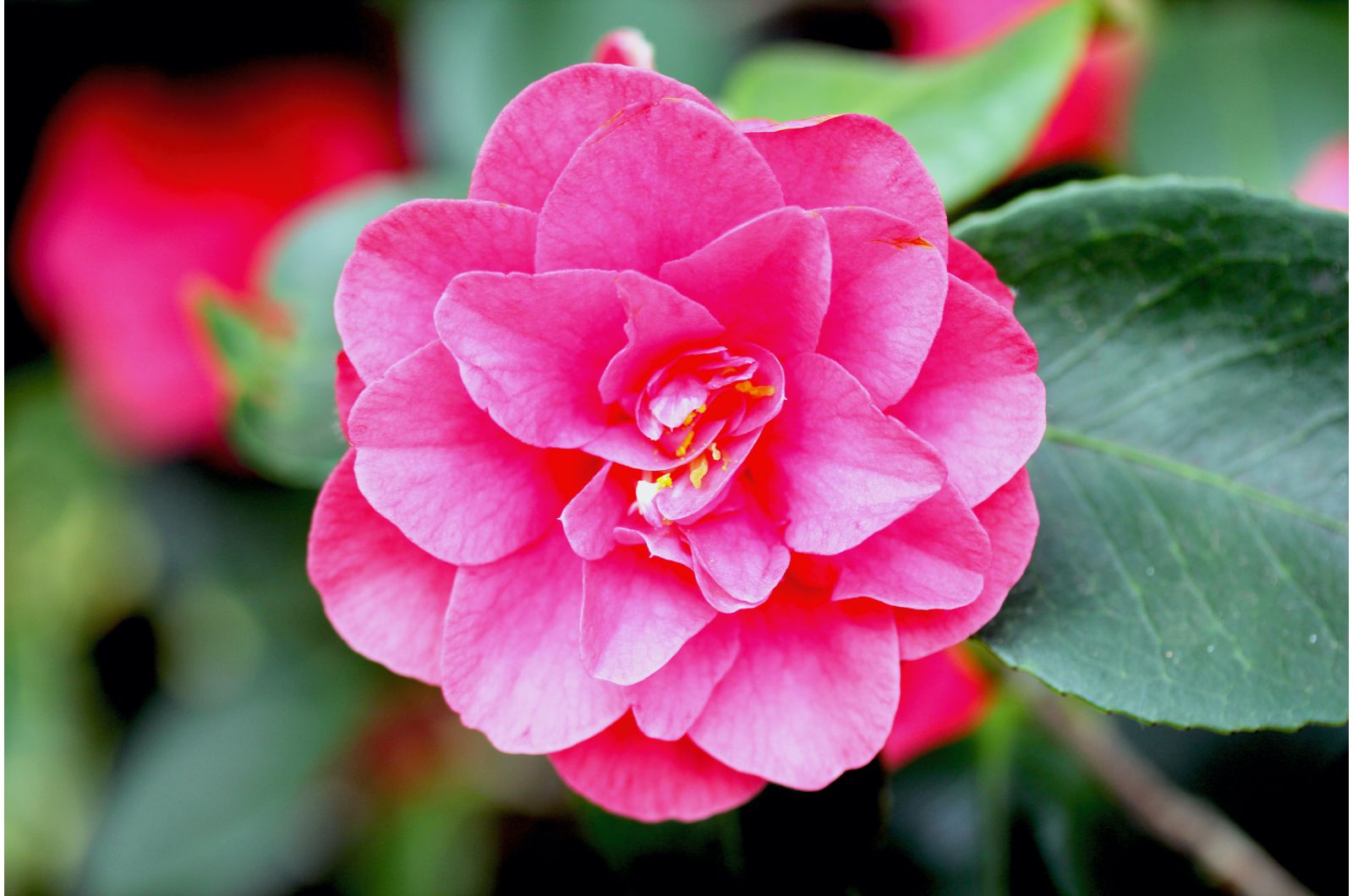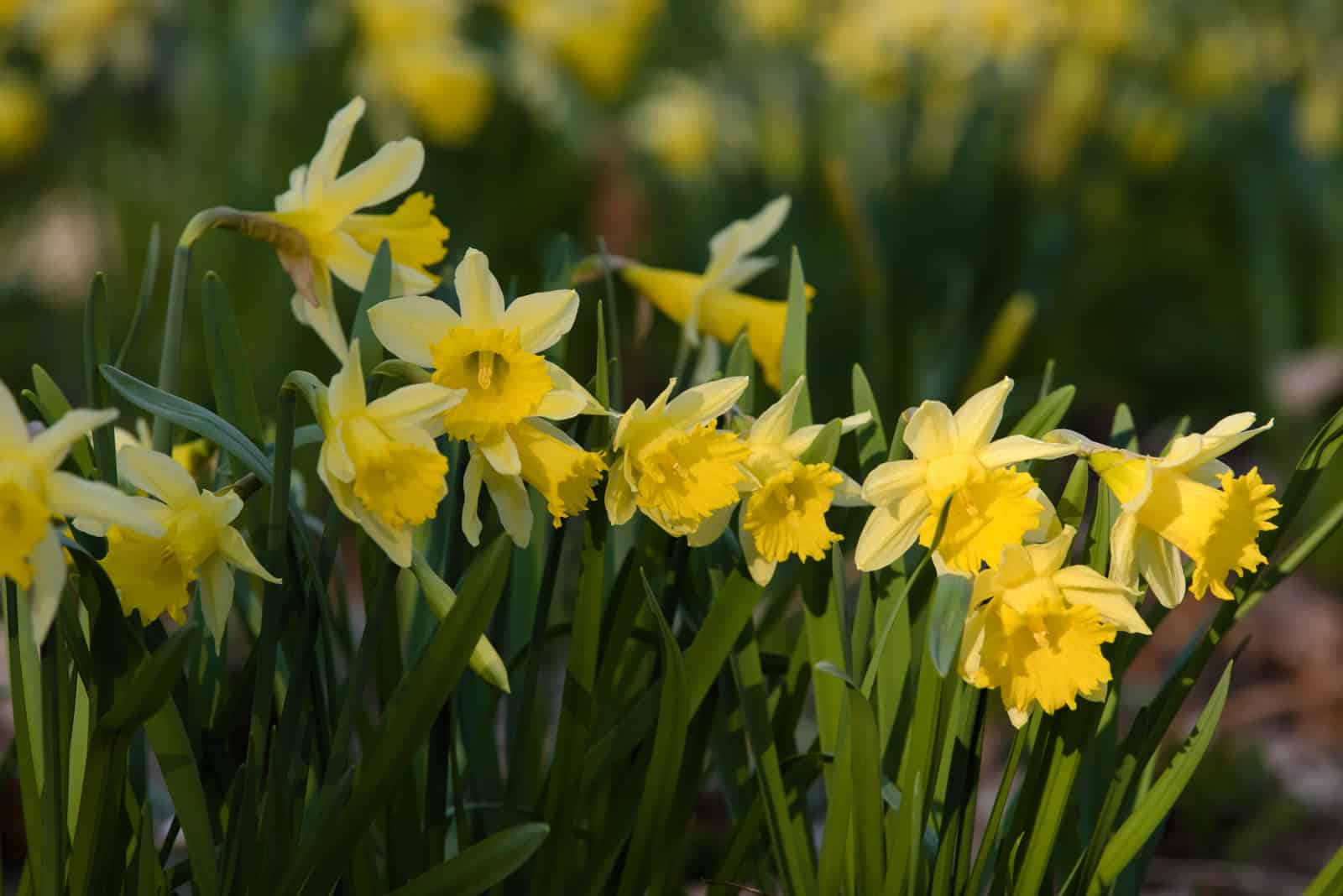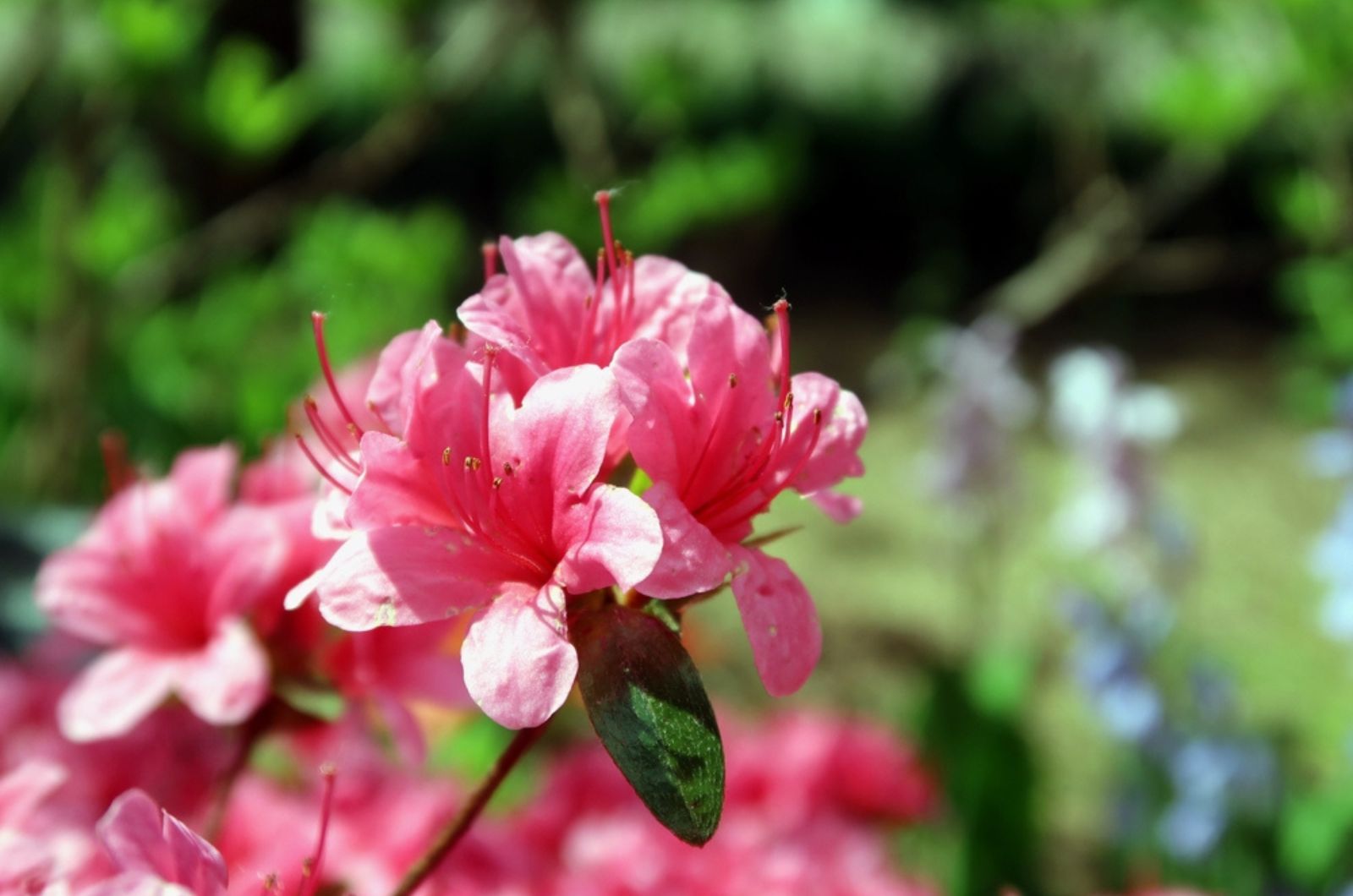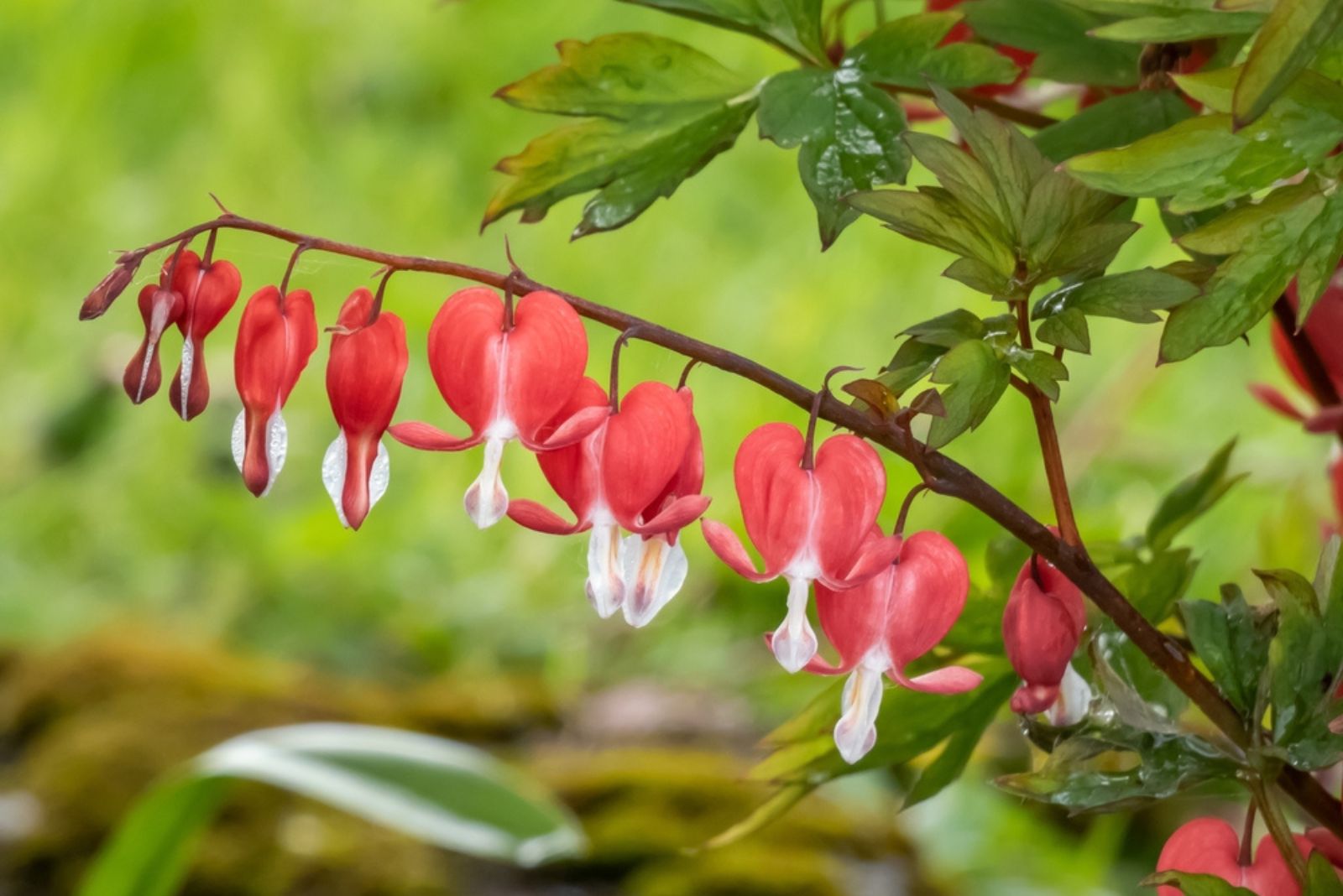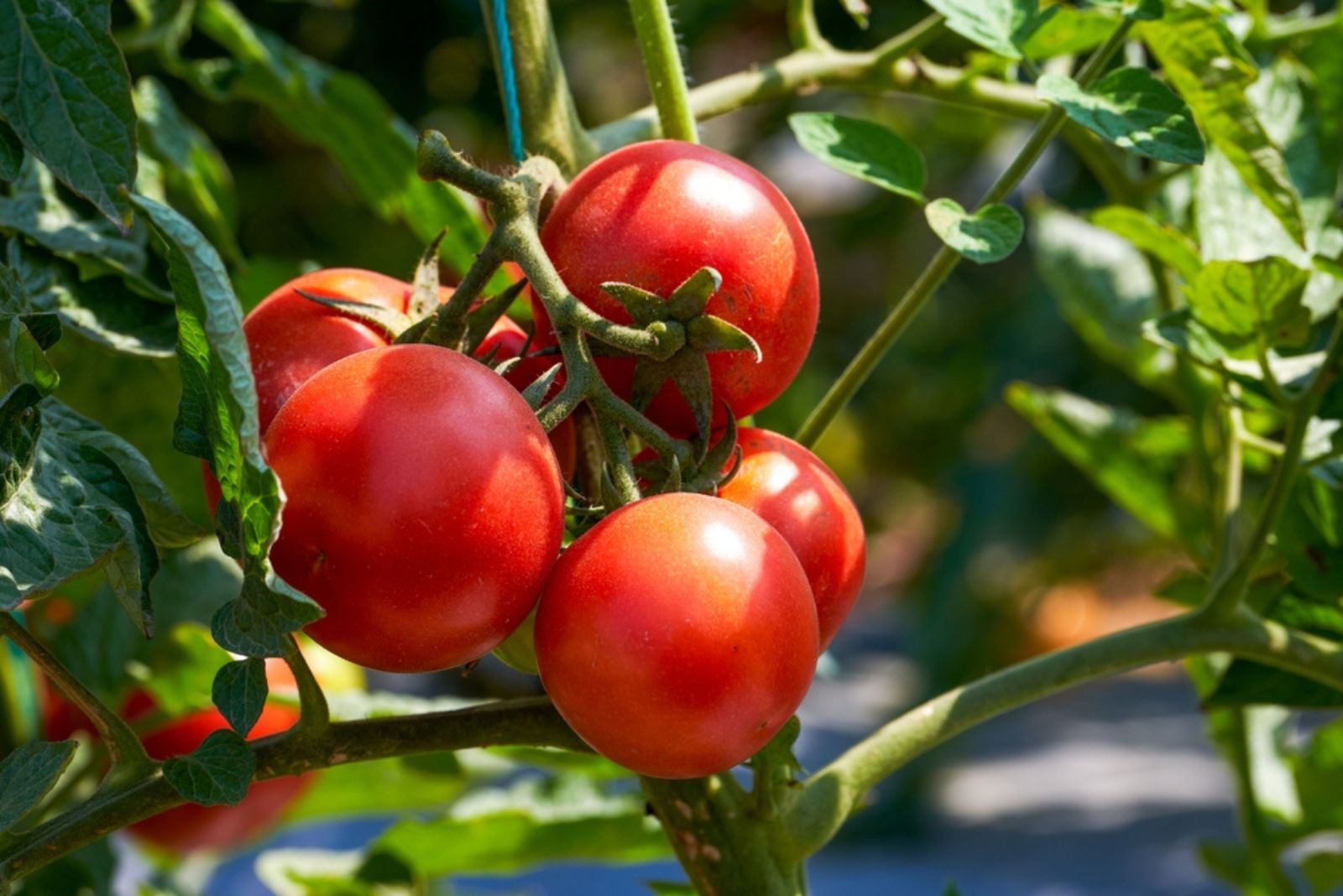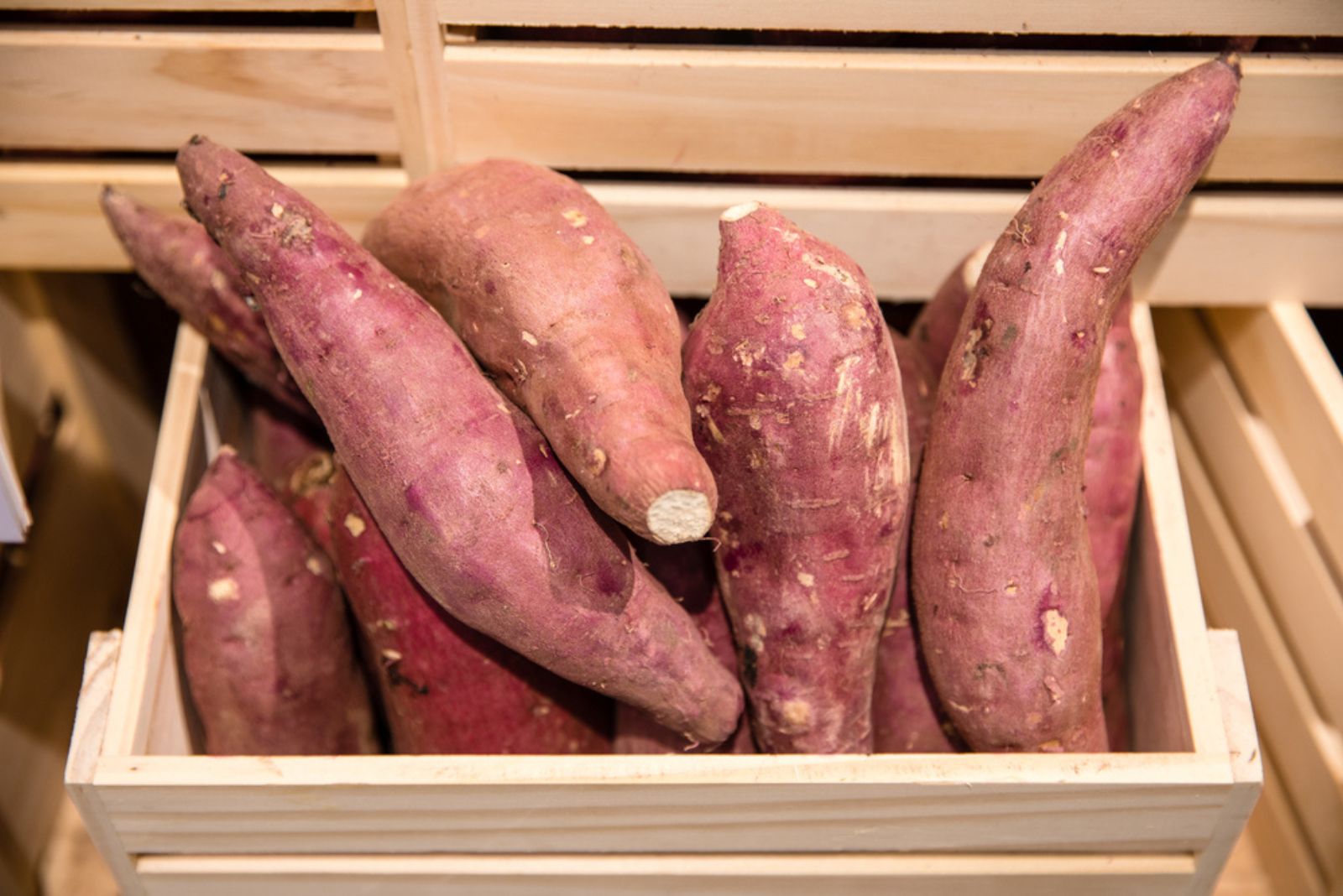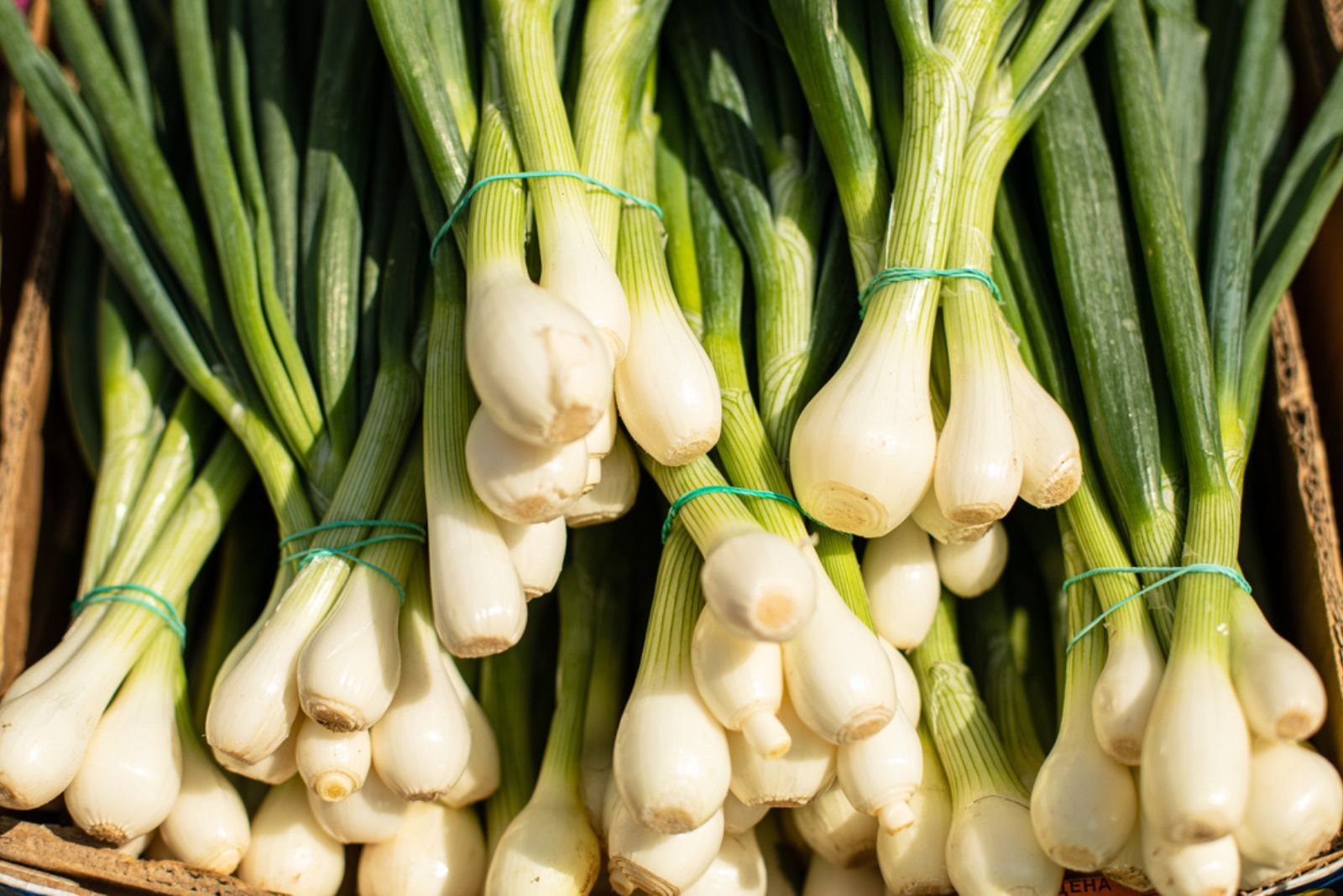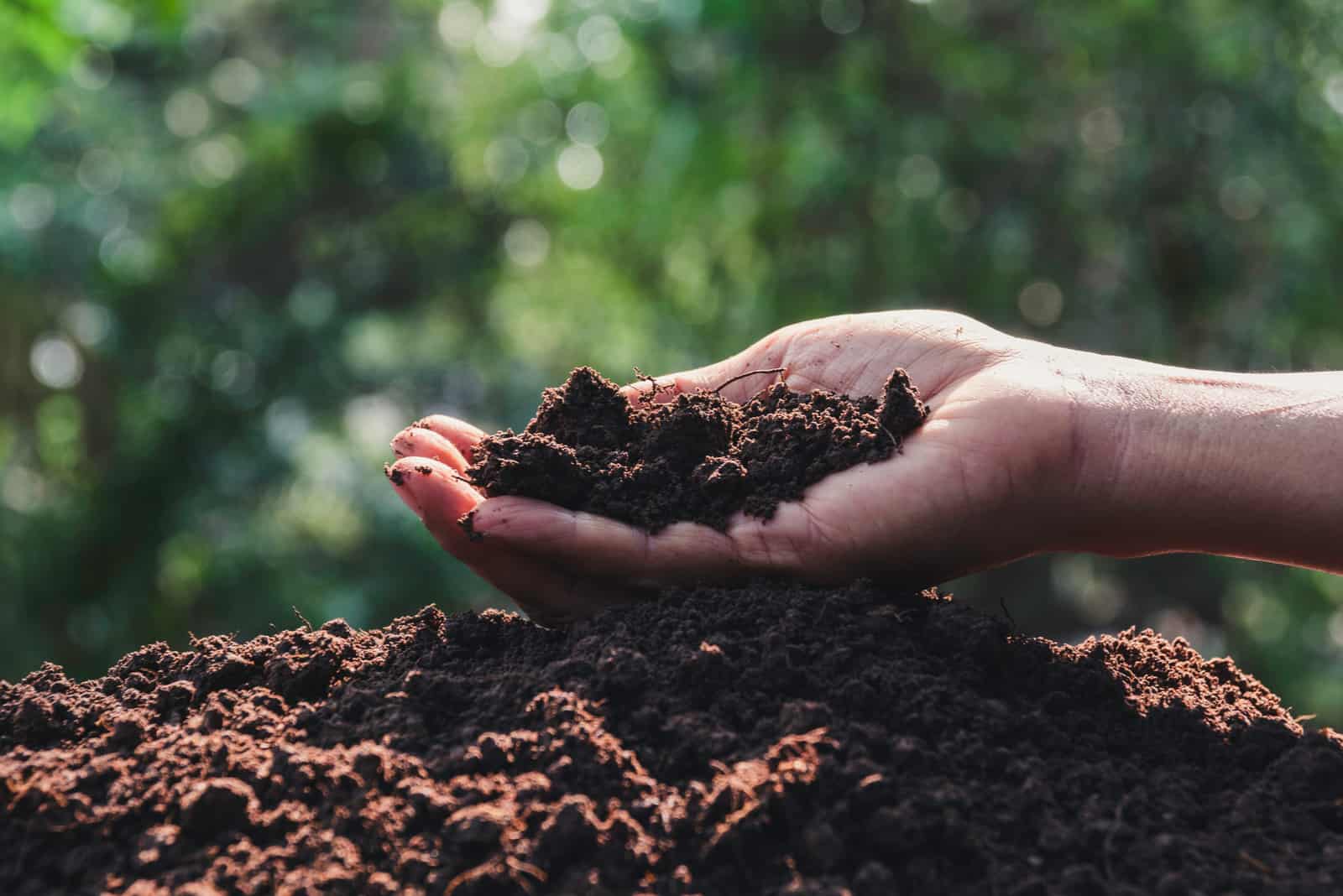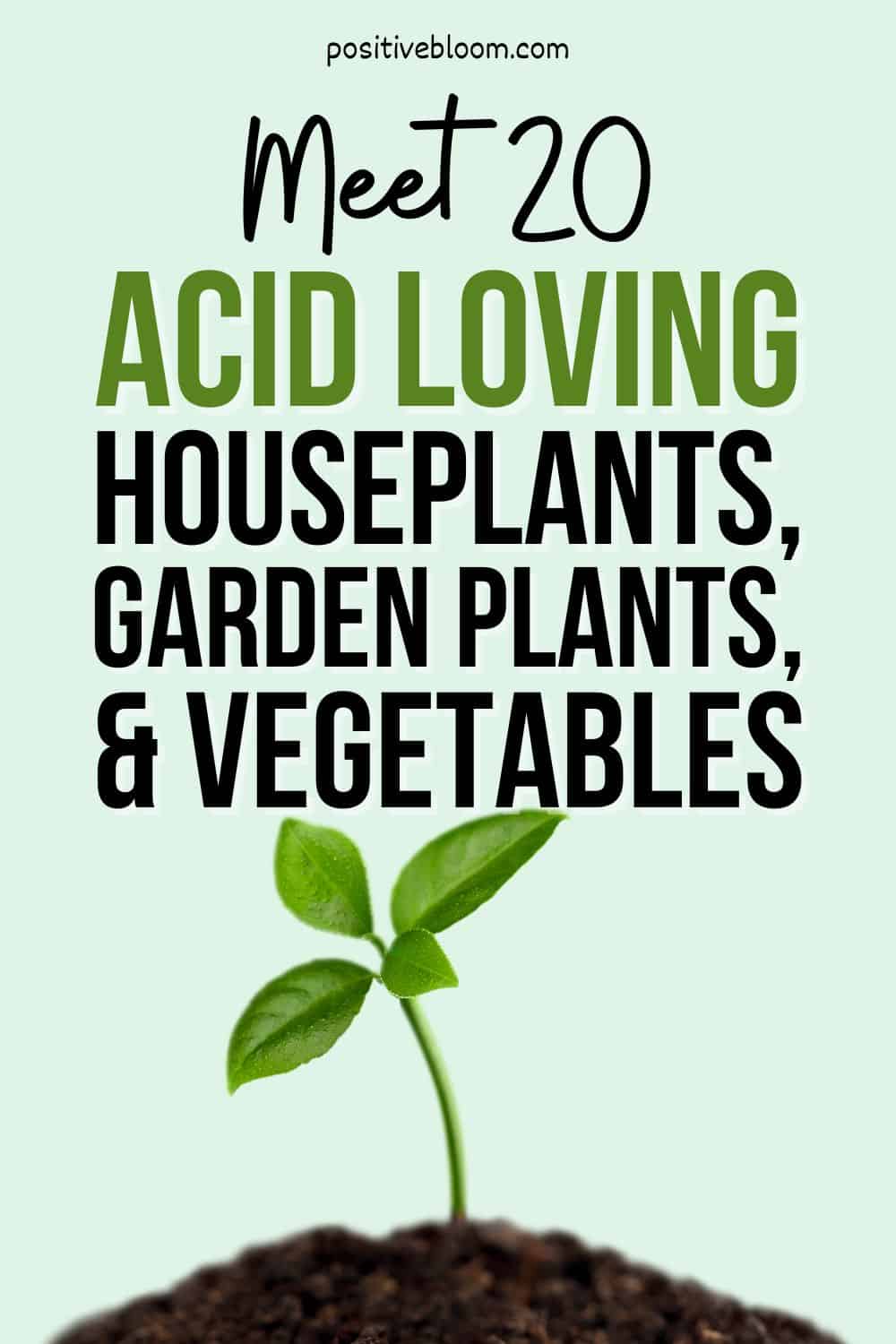Positive Bloom is an Amazon Associate and we earn from qualifying purchases through these links at no extra cost to you.
I haven’t always been good at caring for indoor plants! In fact, I often saw my plants drooping, their tips turning brown, and holes appearing in the middle of their leaves. At that point, I was ready to give up!
However, that only inspired me to research and learn more about the plants I was growing, and I realized that one of the problems they might be facing is unfavorable soil conditions.
There are many acid loving houseplants and garden plants, and if you don’t grow them in their preferred pH level, their roots won’t be able to absorb the nutrients they need for further growth and development.
Therefore, we decided to bring you 20 different varieties of acid-loving plants, perfect for whether you want to grow them inside or outside your home.
We also included some veggies that prefer acidic soils, as well as more information about this type of growing medium, so make sure you stick around until the end.
Let’s get started!
8 Acid Loving Houseplants
This section deals with some of the most common plants that thrive best in more or less acidic soils, and everything you need to know about their ideal potting mix.
We also included short care guides because getting the right soil pH level and drainage is not the only thing your plants need to thrive.
1. Philodendrons
Philodendrons prefer a soil pH value between 5.0-6.0. They also thrive in loose, well-draining growing mediums rich in organic content and nutrients. Three primary nutrients that all plants need are nitrogen, phosphorus, and potassium, but a philodendron will also need magnesium in addition to these minerals.
Choose a liquid, well-balanced fertilizer such as triple 20 that also contains nutrients such as iron, copper, zinc, and calcium to equip your plant with everything it’ll need for healthy development.
If you have an Imperial Green Philodendron, or any other variety for that matter, you should keep it in bright indirect light and water it whenever the topsoil is dry.
2. Monstera
Another houseplant that thrives in an acidic medium is the monstera, and the perfect pH of the soil for this plant is between 5.5-7.0. If you don’t know whether the planting substrate is suitable for your monstera, you can always get a pH testing kit on Amazon, such as this one:
Monstera plants aren’t that picky about the soil pH level, but if it’s too high you can always add some sphagnum peat moss to increase acidity. Peat moss will also improve water retention, so you won’t have to water your plant too often.
This indoor plant prefers fertile and well-draining soil, so add some general-purpose fertilizer like triple 10 once a month during its growing season.
Ensure that your plant is exposed to plenty of indirect sunlight, and it will grow like crazy.
3. African Violet
The African violet prefers mildly acidic soil with a pH between 6.0-6.5, so if the pH meter shows that the acidity level isn’t ideal you can always add some coffee grounds to the potting soil to increase it.
If you wish to make your own mix for this plant, you should add some peat moss, vermiculite, and perlite to regular soil and ensure that it is rich in organic matter.
These plants love nutrients, so we always add some fertilizer specialized for African violets, such as this one:
However, African violets need more than just soil and fertilizer to produce their alluring blooms. Place them on an east-facing windowsill and water them whenever the soil feels dry.
4. Peperomias
All peperomias have pretty much the same needs, so if you know all about the peperomia frost care guide you can apply that knowledge to any other radiator plant you may have. These members of the amazing kingdom of flora thrive in soils with a slightly lower pH level, within the range of 6.0-6.6 is perfect.
It also needs a medium with good drainage and aeration, so be sure to add orchid bark, perlite, and coir. We also put some worm castings into the blend to improve fertility. Speaking of fertility, you should give your plant some extra food once or twice a month when it’s actively growing; diluted 20-20-20 fertilizer has never failed us.
Place your peperomia in a bright spot, but avoid direct sunlight as it can scorch its captivating green leaves, and water it whenever the soil dries, which may be once every 1-2 weeks.
5. Gardenia
The Gardenia is a flowering plant that can be grown both indoors and outdoors, but lately, we have been keeping ours inside as it adds so much to the interior decor.
It’s one of those plants that like acidic soils, and the pH should be between 5.0-6.5 in order for it to thrive. It needs well-draining soil with plenty of nutrients to produce its white, rose-like flowers.
It needs to be fertilized every once in a while, but the good news is that it requires the same fertilizer as your azaleas and camellias. You won’t have to spend much money on many different products if you get a fertilizer like this one:
This plant thrives best in east-facing rooms or a garden because it needs a few hours of direct light in the morning, but won’t want to be in the burning afternoon sun. Also, don’t forget to give it an inch (2.5 cm) of water every week if you grow it indoors.
Outdoor gardenias don’t require water if it’s been raining recently.
6. Succulents And Cactuses
Both succulents and cactuses thrive in acidic soils, although succulent plants prefer more acid in their growing medium. The ideal soil pH level is around 5.5, but they can handle pretty much any substrate with a pH between 4-6.5. Cactuses, on the other hand, thrive when the pH is 5-6.5, but there are some varieties that can do well in neutral soils as well.
Both species prefer well-draining mediums, and if you don’t feel like mixing your own blend we recommend this one as it has never failed us:
However, if you like a bit of DIY you can easily make your own growing medium by simply adding perlite and sand to your regular potting soil.
Ensure that your cactuses and succulents are exposed to 10-14 hours of sunlight each day and water them when the soil is mostly dry.
7. Chinese Evergreen
If you want to make the best conditions for Chinese evergreen plant growth, you need to pay attention to the soil pH. This plant prefers it to be somewhere between 5.5-6.5. Of course, the substrate must drain well and provide proper aeration to the roots, so add some sand and perlite into the potting soil.
The Chinese evergreen is an undemanding plant and is on the list of plants for offices with no windows as it flourishes in low to medium light conditions. You don’t have to water it that frequently, either; it will do just fine if you water it once a week in the summertime and once every other week in the winter.
8. Begonia
If you see a flower with hypnotizing blooms in a pot, it’s likely a begonia, and you can grow one yourself if you pay attention to a few details.
The first thing you need to consider is the soil pH, which should always be between 5.5-6.5. If it isn’t, your plant won’t be able to absorb the nutrients it needs to survive and become strong and healthy.
This plant also needs proper drainage as it is highly susceptible to root rot. Therefore, always add perlite, peat moss, and vermiculite to ensure that all the excess water can drain away.
It prefers partial shade to full sun and produces the densest and most attractive blooms if it gets light in the morning and shade in the afternoon. However, it can also grow in full shade, but not in full sun, so keep this in mind when choosing a spot for your plant.
The soil moisture should be balanced and neither dry nor wet, so you should water this plant once every 2-4 days depending on the weather conditions.
9 Acid Loving Garden Plants
There are lots of amazing acid-loving houseplants that prefer to be outside in the garden.
We will now look at nine different outdoor plants that prefer acidic to alkaline soil, so don’t forget to do some soil testing before planting them.
1. Dogwood
Dogwood is one of the best centerpieces for your garden and provides incredible shade in which to spend spring days relaxing. However, you must keep its preferred soil pH in mind before planting it.
This small tree thrives in fertile, well-draining, and acidic mediums with a pH between 5.5-6.0. Plant it somewhere with partial shade to enjoy its gorgeous flowers, and water it once a week for the best results.
You can learn many helpful tips for planting dogwood trees in this video:
2. Lily Magnolia
The Lily magnolia is a tree with purple flowers and another variety that prefers acidic to alkaline soils. The favored pH level is between 5.6-6.0, and you can always add some peat moss to lower the soil pH level.
Also, this plant is not crazy about fertilizer, but you can sprinkle some slow-release fertilizer at the beginning of its growing season to enhance blooming.
Again, the soil should be nutrient-rich and well-draining, so you can always add some compost before planting.
It needs full sun to thrive and produce the best blossoms. Finally, don’t forget to water it. The soil should be moist, and you can irrigate young plants once a week, whereas plants older than two years require water every other week.
3. Hydrangea
Hydrangeas are picky about their soil pH, and they prefer a slightly acidic substrate with a pH between 6.0 and 6.2. If the pH is just a little bit higher (over 6.4), they won’t be able to take up aluminum, which will lead to iron deficiency.
This plant thrives in loose and fertile substrates extremely rich in nutrients, so we always use this compost blend to improve the drainage and fertility of our garden soil:
The good news is that you don’t have to do any complicated math to decide when and with what you should fertilize this plant; simply add some slow-release, general-purpose fertilizer such as triple 10 or 12-4-8 once a year.
It would be best if you could grow your hydrangea in an east-facing garden as it needs direct sunlight in the morning, but the midday sun would scorch it so it needs afternoon shade as well. This plant loves water, so you should irrigate it deeply every other day.
4. Azalea
Azaleas are popular flowers in France, but gardeners all over the world grow this beauty. When it comes to growing them, you need to be careful about which planting medium you’re using. The soil pH should always be between 4.5-5.5 to ensure proper nutrient uptake.
They thrive in loose substrates with good drainage, so adding peat moss, horticultural sand, or even compost will make the best soil for this plant.
There are fertilizers specialized for acid-loving plants such as gardenias, camellias, and azaleas, so you can simply use one of those and follow the instructions on the package.
Azalea species, such as Azalea japonica, thrive in either full sun or partial shade depending on the heat, but they generally need at least four hours of sunlight per day. Water it twice a week, but don’t clog the soil with water as that can have lethal consequences.
5. Camellia
The Camellia is another flower that dreads alkaline soils, so you should grow it in a nutrient and organic-matter-rich, well-draining, acidic medium with a pH between 5.5-6.6. Thankfully, there are specially designed fertilizers for this plant you can use without worrying.
Camellias cannot handle the hot midday sun, but if you plant them where they can bask in the morning sunlight and relax in the afternoon shade, they will endow your garden with the most beautiful flowers.
Don’t forget to water your camellias! They need water once a week after being planted, and once they are established you can reduce watering to twice a month if there’s no rain.
6. Daffodil
Daffodils are one of the most spectacular Greek flowers. If you want to grow them properly, you should make sure that the soil pH level is between 6.0-6.5. Plant the daffodil bulbs in loose, well-draining soil with plenty of nutrients and organic matter.
You can fertilize them with fish emulsion or some other organic fertilizer, ensure they have at least six hours of sun each day, and give them approximately an inch (2.5 cm) of water every week.
7. Rhododendron
The Rhododendron is an acid-loving outdoor plant, so you should try and lower the pH to 4.5-6.0 for it. You can always mulch this plant with pine needles to increase acidity.
Ensure that the soil is fertile and has proper drainage so the water doesn’t linger and kill the roots. If the medium is fertile, you won’t have to give this flowering plant any additional food.
The best place for growing rhododendrons is neither full sun nor full shade, but rather somewhere in between. Dappled shade works best for this plant. Established plants don’t need to be watered at all, only during cases of prolonged drought (if there hasn’t been rain for 2-3 weeks).
However, young plants are more sensitive, and you should water them twice a week from spring to fall during the first year of their life.
8. Cranberries
There’s always room for tasty berries in our garden! If you want a plentiful harvest of cranberries (or blueberries for that matter), you should plant it in a well-draining medium amended with hummus, with a pH between 4.2-5.5.
You can also add some compost to ensure that there are plenty of nutrients in the soil, but be careful because cranberries don’t like mushroom compost.
Plant this fruit vine in a sunny spot where it can get at least 6-8 hours of sunlight every day, and irrigate it with an inch (2.5 cm) of water each week.
Here’s a video if you need help planting your first cranberry vines:
9. Bleeding Heart
I remember seeing a bleeding heart in my grandma’s garden when I was a child, and its beauty overtook me. This plant thrives in slightly acidic soils with a pH between 6.0-6.5, but it can survive mildly alkaline mediums up to 7.5.
Plant it in a substrate enriched with hummus and plenty of nutrients and organic content. Also, be careful about the location because this plant grows and flowers best when it gets sun in the morning and shade in the afternoon.
Like most of the other plants we have examined, it needs an inch (2.5 cm) of water a week, but if there’s been rain you don’t have to water it.
3 Vegetables That Prefer Acidic Soil
There are many veggies that grow best in acidic mediums, and in this section, we’ll look at the three most common varieties you can find in almost any vegetable garden.
1. Tomatoes
Tomatoes are everyone’s favorite vegetable and quite easy to grow. Simply plant them in a fertile and well-draining growing substrate with a pH between 5.8-7.0.
It’s a good idea to learn about the tomato seedling stages because you’ll know when exactly you need to water it and how much light it needs. However, as the plant gets older it needs more and more light, so if you want to have delicious tomatoes in your salad you should expose them to at least 6-8 hours of sunlight each day, but 10-12 hours per day is optimal.
Water your tomatoes with 1-2 inches (2.5-5 cm) of water per week, depending on the temperature and weather conditions.
2. Sweet Potatoes
Sweet potatoes are an excellent side dish to chicken meals, and once you start growing your own you’ll be addicted to the taste before you know it! This plant prefers acidic to slightly alkaline mediums with a pH level between 5.5-7.5.
It thrives in loamy and sandy soils with good drainage, prefers 8-10 hours of sun a day, and needs about an inch (2.5 cm) of water per week.
Pro tip: Stop watering this plant about a month before the harvest to prevent splitting tubers.
3. Onions
The last plant this article will examine is onions, which are one of the most widely used vegetables in the world. It flourishes in slightly acidic or neutral soils with a pH between 6.0-7.0.
There’s a lot to learn about the onion growing stages and onions in general. Still, its most basic needs are an aerated, loose, and loamy substrate, 11-12 hours of sun per day for short-day onions, 12-14 hours of light per day for intermediate-day types, and more than 14 hours of sunlight each day for long-day veggies.
Like many other plants, this veg is somewhat water-thirsty, so water it with an inch (2.5 cm) of water every week.
Frequently Asked Questions
There are still more questions about acidity in the soil, so we decided to answer some of them and give you tips for raising or lowering acidity to help you make your soil the best growing medium for your plants.
How to make soil more acidic?
There are many ways of making soil more acidic, from covering it with organic mulch to using sphagnum peat moss to amend it. Nitrogen, sulfur, and aluminum sulfate are also known for their ability to increase soil acidity.
You can also use vinegar or lemon by adding a few drops to the existing soil.
Adding some compost to the soil (especially if you made it with coffee grounds or coffee paper filters) can also make the soil more acidic. Finally, there are acidifying liquids you can buy if your soil really needs to be more acidic.
However, most of the plants above have a wide range of preferred pH levels, so always try to make the most of the growing medium you have before adding anything acidic.
How to lower soil acidity?
The most common (and the most effective) way of lowering soil acidity (or rather raising the pH level of the soil) is by adding pulverized limestone to the substrate.
However, be careful about the amount you’re using because you don’t want to make the soil too highly alkaline. Always test the medium before adding lime because you’ll know which type you should use. Then, follow the instructions and don’t add more than the suggested amount because you don’t want to add something acidic to the soil to get to the desired pH level.
What plants prefer alkaline soils?
There are many plants that love alkaline soils, and some of the most common are lavender, lily of the valley, honeysuckle, and asparagus.
Thankfully, you now know how to make the substrate more alkaline, so your plants won’t suffer.
Conclusion
Knowing more about soil acidity is important because acid loving houseplants, garden plants, and vegetables cannot take up nutrients from the soil if their preferred soil pH level isn’t met.
But now you know some tricks about raising it, and your plants will be forever grateful. We also decided to answer some questions about acidity and how to make the soil more or less acidic, as not all plants have the same pH preferences.
Finally, we also mentioned some plants that love alkaline soils.
Happy planting, and until next time!
Like this post? Share or pin it for later!

